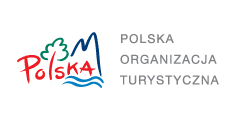Swinoujscie
Swinoujscie
Swinoujscie is a spa city which is an administrative part of Western Pomerania. It is a seaside resort, situated in the north-western part of the province at the mouth of the River Swina with the Baltic Sea. The three islands on which the city is located, Uznam, Wolin and Karsibor, are inhabited and communicatively connected. The resort has the characteristic of a marine spa with a maritime climate that is mildly stimulating and moderated by the surrounding wooded areas and parks. The basic elements utilised for treatments at the resort are the natural spring mineral water, which is rich in bromides, iodine and sodium, the therapeutic mud and the local climate.
The first human settlements, on the land where Swinoujscie now stands, appeared more than 5000 years ago according to evidence of archaeological findings, but the earliest written records about this region date back to the 12th century. Just over a thousand years ago the area around the River Swina was part of the Wolinian Tribal State that Mieszko I incorporated into his territories. In later centuries these lands were ruled by the Pomeranian Princes who built fortified settlements on either side of the river that were destroyed several times by Danish invasions in the 12th century. Between 1185 and 1227, Swinoujscie along with the whole of West Pomerania was a satellite state of Denmark.
In 1628 the imperial army occupied the „Swina Gateway” and build fortifications that protected the access to the River Swina from the sea but only two years later the Swedish army landed on Uznam Island and King Gustav II Adolf of Sweden stayed 5 days in Karsibor. With the end of the Thirty Year War in 1648, according to the Treaty of Westphalia, the city and the whole of West Pomerania was ceded to Sweden. In 1720 the islands of Uznam and Wolin were purchased by Prussia for the sum of 10 million Thalers in gold.
The 19th century saw a significant expansion of the port, the building of wooden piers, a deepening of the shipping channel and a location chosen for the construction of the tallest lighthouse in the world greatly improved the conditions for safer navigation. A regular passenger ferry service was started and at the end of the century the city received a direct rail link with Berlin which all had a positive effect on its development.
The history of a spa in Swinoujscie begins in 1822 with the founding of the Bathing Association. Bathing in the sea became fashionable in the early 19th century. It discovered that bathing in heated sea-water in specially prepared bathing facilities had a curative effect on the body making Swinoujscie very popular in a very short time. In the summer the water of Swinoujscie was warmer than in other areas of the Baltic coast and the naturally wide beaches and shallow waters were an attraction for visiting holidaymakers. In 1897 mineral springs were discovered in the town which created the basic requirements for the operation of a spa resort. The increase of the spa operation to a year-round resort only makes the Swinoujscie even more popular. An extensive network rail, road and sea transport and a well maintained residential and accompanying infrastructure contribute to the development of the resort. Shortly before the outbreak of World War II Swinoujscie was one of the largest German spa resorts. The whole sector was taken over by the Russian army after the war and only transferred to the Polish administration in 1958.
Swinoujscie specialises in the treatment of cardiac, dermatological and pulmonary diseases, rheumatism, disorders of the musculoskeletal, respiratory and circulatory systems, post mastectomy and obesity.
Today Swinoujscie has become a proper seaside spa resort featuring sanatoria, natural health centres and an excellent range of accommodation for both patients and tourists. The cultural events can satisfy the most discriminating tastes. The Amphitheatre, the Concert Bowl and the Seaside Promenade host many concerts, festivals and international music and theatre performances. There are also facilities for sport and active tourism on both land and sea. Hiking, cycling and kayaking trails enable everyone to get fit while in contact with unspoilt nature. The type and scope of new investments will no doubt place Swinoujscie amongst the most interesting resorts in Europe.


